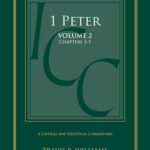Book Note: Reformation Resources
During the past few months, a number of helpful resources related to the Protestant Reformation have hit bookstore shelves. This post will highlight two of the more significant volumes.
Whitford, David M., ed. T&T Clark Companion to Reformation Theology. London: T&T Clark, 2012.
 This new book edited by David Whitford has a contributors’ list that reads like a Who’s Who of Reformation studies. Numerous scholars have written new essays related to their area of specialization. For example, Robert Kolb has written an essay on Human Nature, the Fall, and the Will. Carl Trueman has contributed the chapter on justification. And Carter Lindberg has written a fascinating essay titled “Sanctification, Works, and Social Justice.” In addition to these, more than a dozen other scholars have contributed chapters to this 500-page volume.
This new book edited by David Whitford has a contributors’ list that reads like a Who’s Who of Reformation studies. Numerous scholars have written new essays related to their area of specialization. For example, Robert Kolb has written an essay on Human Nature, the Fall, and the Will. Carl Trueman has contributed the chapter on justification. And Carter Lindberg has written a fascinating essay titled “Sanctification, Works, and Social Justice.” In addition to these, more than a dozen other scholars have contributed chapters to this 500-page volume.
The book begins with a chapter that discusses how to study and write about the Reformation. The author, in this case Whitford, explains that his purpose in this chapter is to “provide…a basic framework for how to write a semester paper or short thesis paper on a Reformation theology topic” (p. 3). This introductory chapter is followed by 18 topical essays that deal with subjects ranging from the doctrine of election, to the sacraments, to “Superstition, Magic, and Witchcraft during and after the Reformation.” As the editor asserts, the list of topics discussed in the work though not exhaustive, is quite comprehensive (p. 3). Unfortunately, the book doesn’t include an index. But because of the way the book is organized, readers should have little problem locating the most relevant discussion of a given topic.
Although topical essays make up the bulk of the book, the volume includes an unusual feature which sets it off from most similar collections of essays. Part two of the book is a 110-page dictionary of terms related to the Reformation. Here entries ranging from the Act of Supremacy (1534) to Zwingli are listed alphabetically, and each term is followed by a one-paragraph explanation of the subject.
While this work is a great addition to Reformation studies, it’s price will probably prevent most potential buyers from taking the plunge to acquire a personal copy. It retails for $175, and at this point it is not available in either paperback or electronic format. Perhaps the publisher is on a mission to make sure students still darken the doors of the academic library from time to time.
Evans, G. R. The Roots of the Reformation: Tradition, Emergence and Rupture. Downers Grove, IL: InterVarsity Press, 2012.
 Cambridge medievalist G. R. Evans has authored or edited many notable books over the past few decades. But weighing in at just over 500 pages, this volume is a substantial addition to her already extensive list of published works.
Cambridge medievalist G. R. Evans has authored or edited many notable books over the past few decades. But weighing in at just over 500 pages, this volume is a substantial addition to her already extensive list of published works.
The book is divided into three main sections. Part one discusses issues related to Scripture and the church. In some ways, Evans has written a topical history of the church from about the time of Augustine up through the sixteenth century. In the book’s early chapters, Evans discusses how various important questions were asked and answered by Christians at different points in history.
Part two of the book focuses on changes that were taking place during the Middle Ages and how many of these changes precipitated the Reformation. Among other topics, she discusses the advent of universities, the beginning of various monastic orders, and impact of Wyclif and the Lollards.
In part three, Evans discusses the Reformation period itself. This section, which is roughly as long as the first two sections combined, includes chapters on each of the major branches of the Protestant Reformation as well as a chapter on the Counter-Reformation. Interestingly, although Evans hails from England and has spent her career teaching there, her discussion of the English Reformation (or as she calls it, “English Lutheranism”) is surprisingly short. I also noticed that in light of Carl Trueman’s recent dig at Baptists, Evans does not identify 1536 as being a particularly significant date in Baptist history. The book ends by returning to the two themes with which it began, namely, Scripture and the church. As Evans observes, when the practice of interpreting Scripture shifted from the church to the individual, the outcome was not simply a new church, but rather churches. Changing views about the role of Scripture, and the right to interpret such, led to the division of Western Christendom that has continued to this day.
Compared to Whitford’s volume, Evans’s work is much more affordable. It retails for $30 and can be purchased through Amazon for less than $20. The value of Evans’s volume is that it sets the Protestant Reformation in the broader context of Medieval history and the changes that were taking place in Europe during the centuries before Luther. On the other hand, those looking for helpful discussions of major topics in Reformation theology will be better served by tracking down a copy of Whitford’s book.


